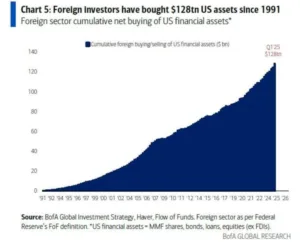The Securities and Exchange Board of India (SEBI) has introduced a new investment category called Specialized Investment Funds (SIFs). This new framework, announced on February 27, 2025, is designed to provide a flexible investment option that sits between mutual funds and portfolio management services (PMS). The rules will come into effect on April 1, 2025, and the Association of Mutual Funds in India (AMFI) will release detailed guidelines by March 31, 2025.
What Are SIFs and Why Do They Matter?
SIFs offer more investment flexibility than traditional mutual funds but are still more accessible than PMS, which typically serves ultra-wealthy individuals. These funds allow fund managers to experiment with different strategies, making them a hybrid investment option for those seeking more customization without requiring massive capital. SEBI hopes SIFs will attract a broader range of investors looking for innovative investment solutions.
Minimum Investment and Key Rules
To invest in an SIF, you must contribute at least ₹10 lakh across all strategies within the fund, linked to your Permanent Account Number (PAN). However, accredited investors—those recognized by SEBI for their financial expertise or wealth—are exempt from this rule.
You can invest through Systematic Investment Plans (SIPs), Systematic Withdrawal Plans (SWPs), or Systematic Transfer Plans (STPs), but your total investment must always stay above ₹10 lakh. If your investment falls below this due to market changes (passive breach), you cannot add more money; instead, you must redeem your remaining balance.
Investment Limits in Debt Securities
SIFs can invest in corporate debt securities but with restrictions to ensure diversification and reduce risk:
AAA-rated debt (safest) – Max 20% of total fund assets
AA-rated debt (moderately safe) – Max 16%
A-rated or lower (riskier) – Max 12%
Single-sector investment cap – Max 25% of the fund’s Net Asset Value (NAV)
Who Can Launch an SIF?
SEBI has set strict eligibility criteria for Asset Management Companies (AMCs) looking to launch SIFs. There are two ways to qualify:
Route 1: Experienced Mutual Funds
The mutual fund must be at least three years old.
It should have managed an average of ₹10,000 crore in assets over the past three years.
The sponsor or AMC should have had no SEBI regulatory action in the last three years.
Route 2: Experienced Fund Managers
The AMC must appoint a Chief Investment Officer (CIO) with at least 10 years of fund management experience and ₹5,000 crore in assets under management (AUM).
A Fund Manager with at least three years of experience and an average AUM of ₹500 crore is also required.
The AMC should have had no SEBI regulatory issues in the last three years.
How SIFs Can Invest
SIFs have greater flexibility to explore different strategies, such as:
Equity long-short (betting on some stocks to rise and others to fall)
Debt long-short (similar strategy but in debt instruments)
Hybrid models (mixing stocks and bonds)
However, SEBI has placed some investment limits:
Unhedged short positions via derivatives (high-risk bets on falling prices) can only use up to 25% of the fund’s net assets.
Total exposure (cash plus derivatives) cannot exceed 100% of the fund’s net assets.
Debt-focused SIFs must follow the 25% sectoral cap to prevent excessive concentration in one industry.
Equity-focused SIFs will be compared against major indices like the Nifty 50 or BSE Sensex, while debt-focused funds will track bond market indices.
Subscription, Redemption, and Exit Options
SIFs offer three types of fund structures:
1. Open-ended funds – Investors can enter or exit anytime.
2. Close-ended funds – Investments are locked for a fixed period.
3. Interval-based funds – Transactions are allowed only at specific intervals.
For redemption (withdrawal):
Investors must give up to 15 working days’ notice before exiting.
Close-ended and interval-based SIFs will be listed on stock exchanges, allowing investors to sell their units on the market.
Some SIF strategies, called Interval Investment Strategies, will restrict daily buying or selling, offering a balance between flexibility and stability.
Branding and Marketing Rules
To differentiate SIFs from regular mutual funds, SEBI has mandated separate branding. However, for the first five years, AMCs can market their SIFs under their mutual fund brand (e.g., “SIF by XYZ Mutual Fund”), but the SIF name must be more prominent. Clear disclaimers will also be required to prevent investor confusion.
Risk Management and Derivatives Use
SIFs are allowed to use derivatives (like futures and options) beyond just hedging—up to 25% of their net assets can be used for strategic risk-taking.
SEBI will monitor risk levels monthly, classifying SIFs into five risk bands (Risk Band 1 to 5) to help investors understand the level of risk involved.
What’s Next?
With the April 2025 launch approaching, AMCs have one month to prepare under AMFI’s guidance. SIFs offer a new investment option for individuals with at least ₹10 lakh to invest. Whether you’re a seasoned investor or looking for diversified investment opportunities, SIFs could be a game-changer in India’s investment landscape.
Bringing you the latest updates on finance, economies, stocks, bonds, and more. Stay informed with timely insights.






Be First to Comment